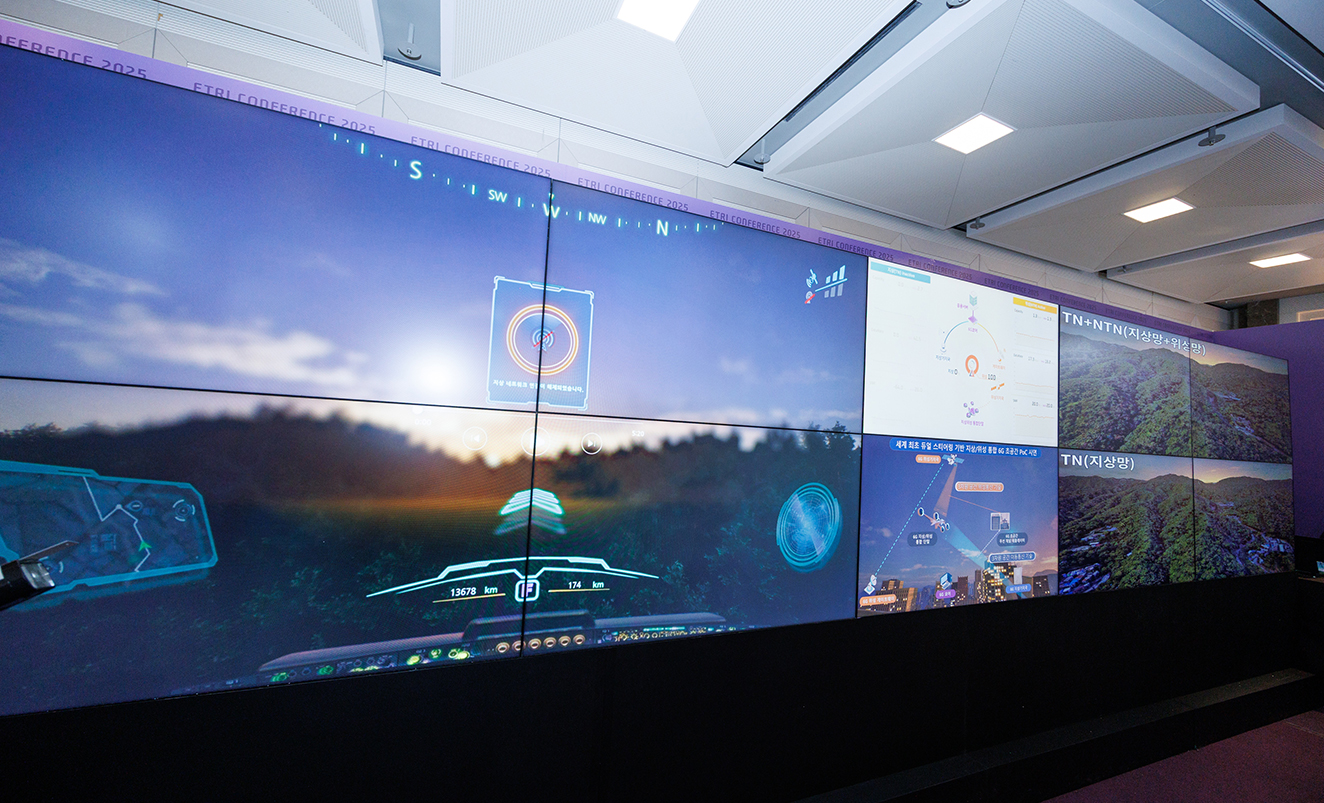ETRI Successfully Demonstrates Integrated Terrestrial/Satellite 6G Hyper-space Communication
Vol.84 August
- 6G Connects Sky and Ground, Enabling Seamless UAM Flights
- World’s First Demonstration, Achieving World-Leading Hyper-space Core Technology

For the first time, Korean researchers have successfully demonstrated a 6G hyper-space communication technology that integrates terrestrial and satellite networks. As a core infrastructure for the future 6G era, it is being evaluated as a green light for securing the lead in 6G international standardization.
Electronics and Telecommunications Research Institute (ETRI) announced that it has successfully realized a testbed composed of terrestrial and satellite base stations, integrated terminals, and a 6G core, enabling urban air mobility (UAM)1) to seamlessly connect to both terrestrial and satellite networks in real time while flying between cities.
In particular, the integrated terminal and 6G core incorporate “dual steering technology2)” that automatically selects either terrestrial or satellite signals depending on the situation to provide stable communication.
To maximize the impact of the demonstration, the researchers linked CG-based animations with actual testbed equipment to visually represent the changes in wireless links between the terrestrial-UAM and satellite-UAM. In addition, Keysight’s channel emulator3) was used to precisely simulate a realistic wireless environment.
Also, the head-mounted display (HMD) enables users to experience hyper-space 6G services from the perspective of being onboard a UAM. This capability, which offers a highly immersive experience, is expected to generate significant interest upon commercialization.
Based on the 6G hyper-space communication technology demonstrated, ETRI has been actively conducting research activities to lead international standards, including ▲ leading 3GPP international standardization activities and ▲ participating in the Open RAN4) Alliance.
To date, ETRI has achieved world-class results in relation to this technology, including ▲ publishing 14 SCI papers ▲ applying for 48 domestic and international patents ▲ adopting 43 3GPP international standards.
Yong Soon Back, Senior Vice President at ETRI, who is in charge of the Terrestrial & Non-Terrestrial Integrated Telecommunications Research Laboratory, said, “In the 6G era, true ‘hyper-space communication’ will be realized, breaking down the boundaries between earth and sky and connecting anytime, anywhere. This demonstration has firmly established our country’s technological leadership.”
Moon-Sik Lee, Assistant Vice President at ETRI, who is in charge of the Satellite Communication Research Division, said, “Until 5G, terrestrial and satellite networks were separated, but 6G aims to fully integrate the two. To achieve this, close collaboration among the public, military, industry, academia, and research is crucial to securing international competitiveness.”
In the future, these technologies will first be applied to next-generation mobility services, such as urban air mobility (UAM), and will serve as core infrastructure for seamlessly connecting the terrestrial and satellite communication systems.
The research was conducted as part of the “6G Core Technology Development” project supported by the Ministry of Science and ICT and the Institute of Information & Communications Technology Planning & Evaluation (IITP). ETRI is the lead organization, with top-level domestic institutions participating, including, SK Telecom, KT, LG U+, KT SAT, SK Telink, AP Satellite, CleverLogic, FRTek, RFHIC, MTG, Ajou University, Inha University, and KAIST.
Meanwhile, the technology was unveiled to the public at ETRI Conference 2025 held early last month and received significant interest.
1) UAM technology: Urban Air Mobility (UAM) refers to the next-generation air transportation technology.
2) Dual Steering technology: Technology that simultaneously controls mobile and satellite networks to transmit data to the device via the optimal route.
3) Channel emulator: A device that simulates a wireless channel link.
4) Open RAN (Open Radio Access Network): A network based on international standards that enhances openness, intelligence, and virtualization compared to traditional wireless networks.
Lee Jun Hwan, Director
Spatial Wireless Transmission Research Section
(+82-42-860-5325, junhwanlee@etri.re.kr)